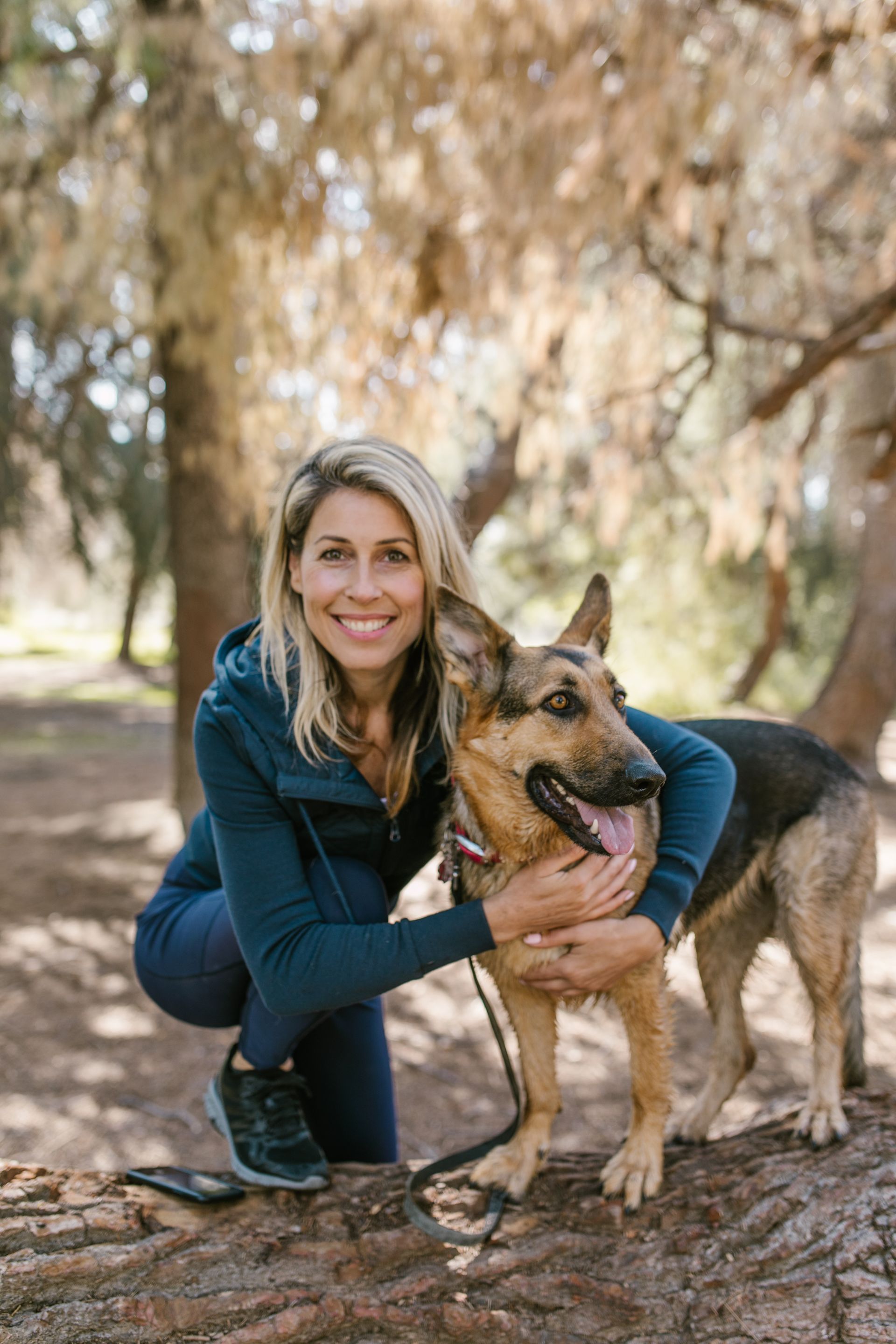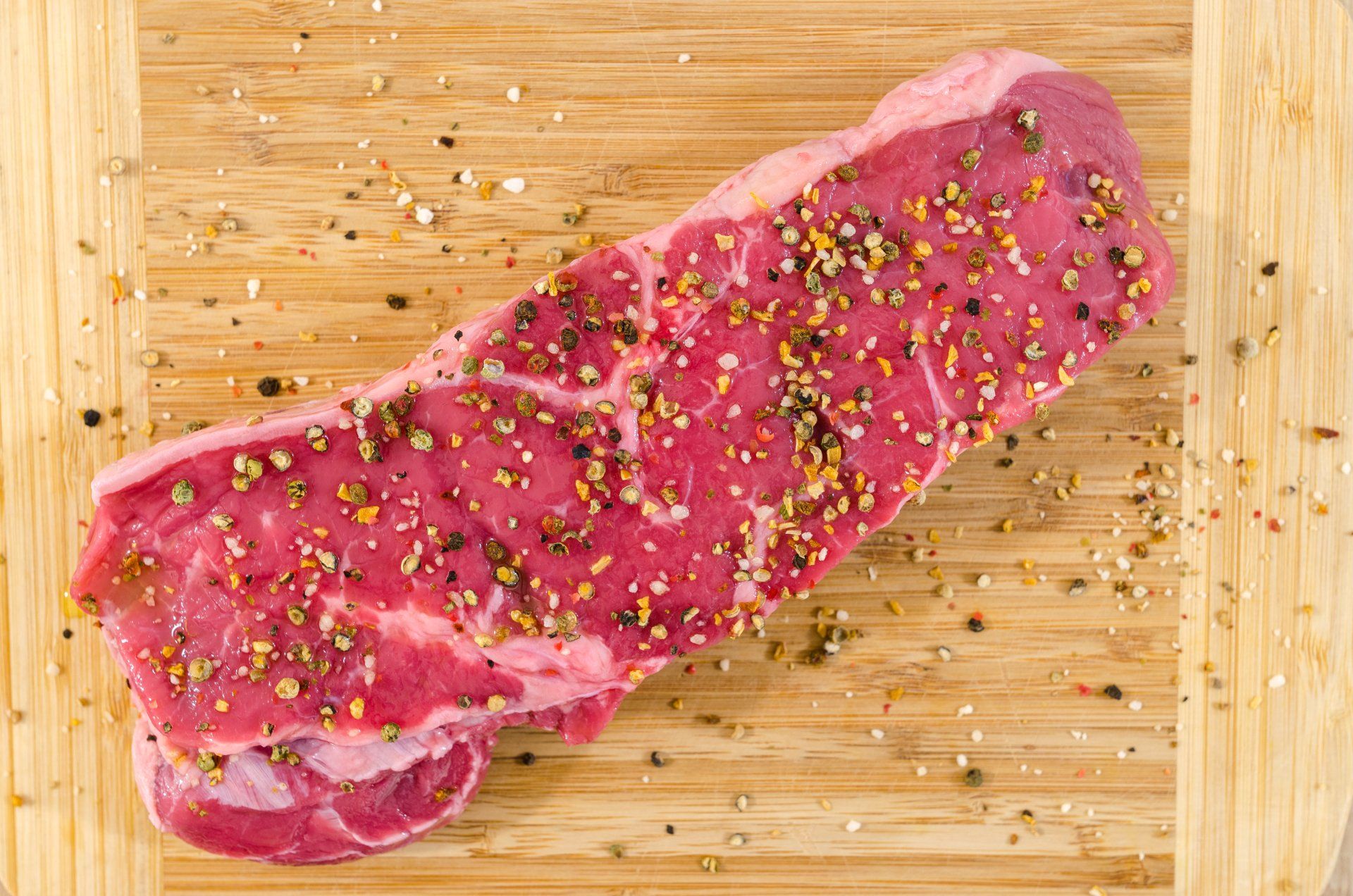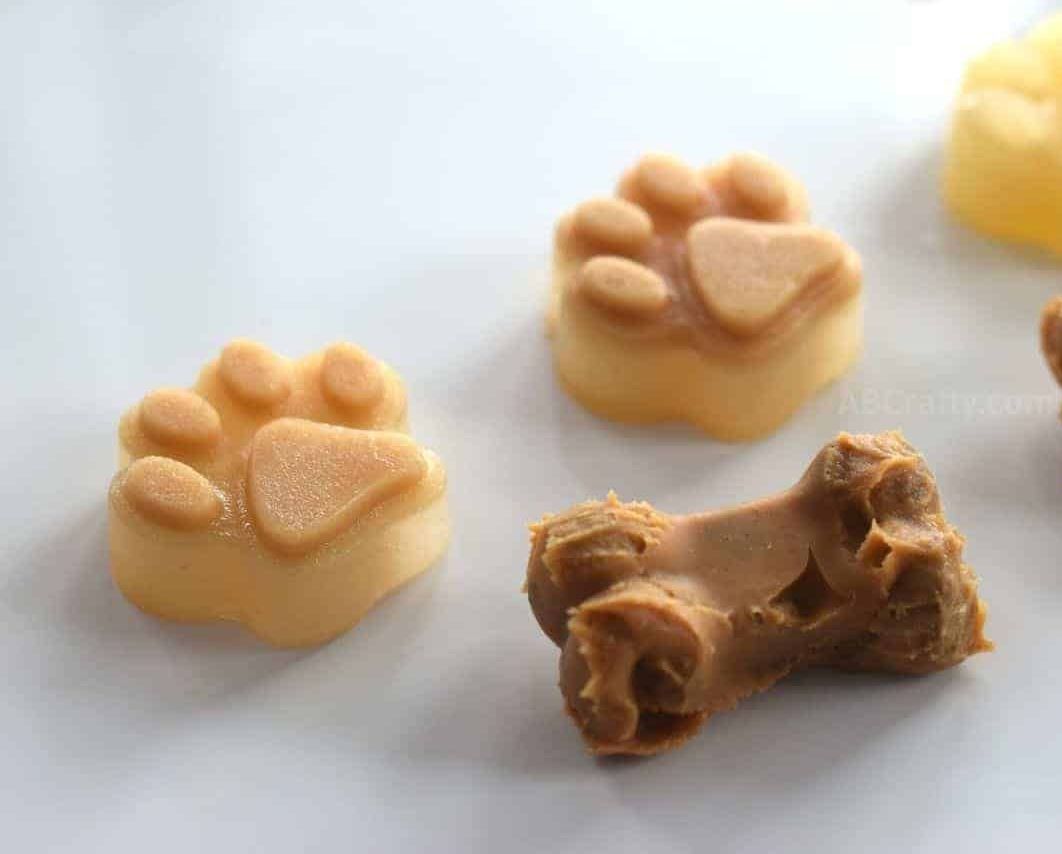BENEFITS OF BUTCHER’S BLOCK HICKORY SMOKED BONE TREATS AND WHY THEY ARE SAFE FOR YOUR PET.
“If a dog’s prayers were answered, bones would rain from the sky” -Turkish Proverb.

Benefits:
Canines in their natural habitat eat prey, including the meat and bones. In fact, your pup has a biological requirement for the nutrients found in bone marrow and the bones themselves. Bones are rich with minerals such as calcium and phosphorus and they also provide your pet with needed Protein.
Dogs love to chew bones for the yummy taste, the mental stimulation, and also because all that gnawing is great exercise for the muscles of the jaw.
When your dog chews on a Butcher’s Block bone, especially a meaty one with cartilage and soft tissue still attached, his teeth get the equivalent of a good brushing and flossing. This helps to break down tartar and reduces the risk of gum disease. Dogs in the wild have beautiful teeth and healthy gums. This is because the prey they eat requires a lot of chewing, and the sinewy composition helps to clean each entire tooth.
Keeping your Pet Safe:
There are three keys to making sure your giving your pet a safe chew: Supervision, choosing the right bone, and choosing a quality product from a quality manufacturer.
- Supervision– Supervise your dog closely while he’s working on a bone. That way you can react immediately if your pup happens to choke, or if you notice any blood on the bone or around your dog’s mouth from over aggressive gnawing. You’ll also know when your dog has chewed down to the hard brittle part of a knuckle bone, making splinters more likely. When the bone has been gnawed down in size throw it out. Do not allow your dog to chew it down to a small chunk he can swallow. It is also imperative that fresh water is available to help aid in your pet’s digestion.
- Choosing the right size– If you are not sure which size of bone to get for your dog, choose a larger size to be safe. A bone that is the size of your dog’s head is a good start and once you know what kind of a chewer your dog is you can head to smaller sizes. First time bone chewers such as puppies should be taught how to eat a bone. Choose a stick shaped bone such as our beef rib. Hold one end of the bone and let your dog chew on the other and pull away if it seems like your dog will try to swallow the whole thing! Through this process, much like a mother wolf might, you teach your dog how to patiently enjoy a bone. Given enough time, your dog will eat the whole bone! These products are 100% natural and depending on your dog’s breed, size, age, and chewing habits, they will break down over time. To avoid eating too much bone, give it to them in several sittings so that they don’t eat the whole thing at once.
Quality Product
– Butcher’s Block Bones are 100% Natural and Made in the USA. The Hickory Smoke process is also 100% Natural, with No additives or preservatives. Our bones are made from USDA inspected Angus and Angus/Hereford crossed cattle born, raised, and harvested in the USA. Additionally, Butcher’s Block Bones processing facility has achieved GFSI certification. GFSI certification is the benchmark for the best food safety and quality practices consistent with meeting human food grade standards. Our facility achieved the highest possible “Grade AA Rating” by a 3rd party auditing firm. This standard is recognized worldwide by global brand owners, manufacturers, and consumers.
For additional information, check out their webpage at:
http://www.butchersblockpettreats.com/about/
According to APPA 2015/2016 report, there are nearly 78,000,000 dogs in the USA. The FDA recently published an article stating they have received 90 reported cases (.000001153% of all dogs) of pet illnesses related to cook bones. The article did not specify over what time period or address whether or not the keys to keeping your pet safe were followed. Always provide supervision, select the right bone for your dog, and ensure you buy a quality bone from a quality manufacturer.
*As with anything your pet consumes, there are inherent risks. Not to minimize those risks, but remember, animals and people choke on water – a critical part of our most basic needs and functions.

Summertime means outdoor adventures for you and your furry friend. But lurking in those tall grasses is a tiny, yet potentially dangerous threat: grass seeds. These seemingly harmless little things can cause a world of trouble for your dog if not caught and removed promptly. How Grass Seeds Can Harm Your Dog Grass seeds are designed to stick, and they do just that to your dog's fur, paws, and even ears. Once embedded, they can cause a range of problems: Skin irritation: Grass seeds can cause redness, itching, and discomfort when lodged in your dog's fur or between their toes. Infection: If a grass seed penetrates the skin, it can carry bacteria, leading to painful and swollen infections. Serious complications: In rare but severe cases, grass seeds can migrate to other parts of the body, causing internal damage. Signs to Watch For Be on the lookout for these signs that your dog may have a grass seed problem: Excessive licking or chewing of paws Head shaking or tilting Pawing at the face Redness or swelling around the eyes or ears Discharge from the eyes or ears Lethargy or loss of appetite Preventing and Removing Grass Seeds Prevention is key to keeping your dog safe from grass seeds: Avoid walking your dog in tall grass, especially during dry weather when seeds are more likely to spread. Regularly check your dog's fur, ears, and paws for any signs of grass seeds. Trim the hair around your dog's paws and ears to reduce the risk of seeds getting caught. If you find a grass seed, try to remove it carefully with tweezers. If you can't easily remove the seed or if the area is red, swollen, or painful, contact your vet immediately. When to See a Vet It's important to seek professional help if: You can't remove the grass seed yourself. Your dog is showing signs of pain or discomfort. There's evidence of infection, such as redness, swelling, or pus. You suspect the grass seed has migrated to another part of the body. By taking precautions and being aware of the risks, you can help protect your furry friend from the dangers of grass seeds and ensure they enjoy a happy and healthy summer. Do you have any other questions about grass seeds or dog care?

Summer is a time for adventure, and what better way to experience the great outdoors than with your furry companion by your side? Hiking and camping trips are a fantastic way to bond with your dog, but venturing into flea and tick territory requires some extra preparation. Here's how to keep your pup safe and pest-free on your next outdoor adventure: Flea and Tick Prevention is Key Talk to your vet : Before you hit the trails, discuss flea and tick prevention with your veterinarian. They can recommend the best product for your dog based on their age, breed, and lifestyle. There are several options available, including topical medications, oral chews, and collars. Apply prevention medication : Follow the instructions on your chosen flea and tick preventative carefully. Be sure to apply it well in advance of your trip, according to the product label. Year-round protection : Many flea and tick medications offer year-round protection. This is important, even if you don't plan on spending a lot of time outdoors, as fleas and ticks can also be a problem indoors. Tick Check Time Daily examinations : Get into the habit of checking your dog for ticks every day, especially after spending time outdoors. Focus on areas like the ears, paws, armpits, and groin where ticks like to hide. Tick removal : If you find a tick on your dog, remove it promptly with a tick removal tool. Never try to pull it out with your fingers, as this can leave the mouthparts embedded in the skin. Be aware of tick-borne diseases : Lyme disease is a common concern in many areas. Talk to your vet about the risks in your area and whether a Lyme disease vaccination is recommended for your dog. Camping Considerations Choose your campsite wisely: Ticks are more prevalent in tall grass and wooded areas. If possible, set up camp in a clear, grassy area. Create a tick-free zone: Treat the campsite perimeter with an EPA-approved insect repellent safe for use around pets. Hiking Happy Trails Stick to the path : Stay on designated trails to avoid tall grass and brush where ticks are more likely to be hiding. Leave no trace: Clean up after your dog and dispose of waste properly. This helps to protect the environment and wildlife. Water, water, water: Just like you, your dog will need plenty of water to stay hydrated on a hike. Bring a portable water bowl and take frequent breaks to allow your dog to drink. By following these simple tips, you and your dog can enjoy a safe and happy adventure in the great outdoors. Remember, preparation is key! With a little planning and preventative measures, you can keep your furry friend safe from pesky fleas, ticks, and other outdoor hazards.

We all want our furry best friends to thrive, and a big part of that is ensuring they get the right fuel for their amazing bodies. But with shelves overflowing with dog food options, deciphering labels and picking the perfect protein and nutrition content can feel like cracking a doggy Da Vinci code. Fear not, fellow pet parents! This post will equip you with the knowledge to navigate the dog food aisle with confidence. Protein Power: Age Matters: Puppies are growing machines, so they need more protein (around 29%) than adult dogs (18-25%). Senior pups may also benefit from a slight protein bump to support muscle mass. Activity Level: The energetic athlete in your life? They likely burn through protein faster than a couch potato pup. Look for higher protein content (up to 30%) in active or working dog food. Source Matters: Just like for us, protein quality is key. Animal-based proteins like chicken, beef, or fish are generally more digestible and provide essential amino acids for your dog's growth and well-being. Beyond the Protein: Protein is a vital piece of the puzzle, but it's not the whole picture. Here's a quick rundown of other important nutrients: Fats: Provide energy and support healthy skin and fur. Look for balanced levels of omega-3 and omega-6 fatty acids. Carbohydrates: Fuel your dog's body and brain. Complex carbs are preferable to simple ones. Vitamins and Minerals: These micronutrients keep your dog's bodily functions running smoothly. Decoding the Label: The AAFCO (Association of American Feed Control Officials) guidelines ensure dog food meets minimum nutritional requirements. Here's what to watch for on the label: Guaranteed Analysis: This section lists the minimum percentages of protein, fat, fiber, and moisture in the food. First Ingredient: This should ideally be a named protein source, like chicken or salmon. Aesthetics: Avoid artificial colors, flavors, and preservatives. Remember: Consult Your Vet: They can recommend a food based on your dog's individual needs and any health concerns. Read Reviews: See what other pet parents have to say about different brands. Start Slow: When switching foods, gradually introduce the new one over a week to avoid tummy tr oubles. By understanding your dog's unique needs and wielding your newfound label-reading skills, you can choose a dog food that fuels their tail wags and keeps them happy and healthy for years to come. Remember, a happy pup makes a happy home! If you're still not sure, we are always willing to provide a FREE pet food consultation to help you find the right fit for your pet.

Spring has sprung! As the days get warmer and we spend more time outdoors with our furry friends, it's the perfect time to revamp their grooming routine. Shedding season is in full swing, and our pups need a little extra TLC to keep them looking and feeling their best. Here are some tips, tricks, and essentials to transform your dog from winter wooly bear to a sprightly spring pup! Brushing Bonanza: Brush, brush, brush! This is the golden rule of spring grooming. Regular brushing removes loose fur, prevents matting, and distributes natural oils for a healthy coat. Choose the right brush: Short-haired breeds might benefit from a bristle brush, while long-haired pups need an undercoat rake to remove that hidden fluff. Make it a bonding experience: Turn brushing into a pampering session. Use a gentle touch and positive reinforcement with treats or praise. Bath Time Bliss: Spring clean that fur! A bath can help remove winter grime, allergens, and that "doggy odor." But be gentle! Frequent baths can strip away natural oils. Use a dog-friendly shampoo: Skip human shampoos, which can irritate your pup's skin. Opt for a gentle, dog-specific formula. Rinse thoroughly: Leaving shampoo residue can cause itchiness. Rinse, rinse, rinse! Paw and Nose Care: Pawsitively essential! Spring means more walks and hikes, so check your dog's paws regularly for cracks, cuts, or debris. Keep paw pads moisturized with a dog-safe balm. Sniffing out dryness: Cold winter winds can leave your dog's nose dry and cracked. Apply a little petroleum jelly (safe for dogs!) to keep their nose happy and healthy. Bonus Tips: Fight the fleas and ticks: Spring is prime time for these pests. Talk to your vet about flea and tick prevention medication. Freshen up their breath: Dental hygiene is important! Ask your vet about dog-safe dental chews or sprays to keep their breath minty fresh. Spring Grooming Essentials: High-quality brush or comb suitable for your dog's coat type Gentle dog shampoo and conditioner Dog-safe ear cleaner (optional) Nail clippers (optional, consult your vet if unsure) Dog-safe paw balm Flea and tick prevention medication (consult your vet) With a little extra effort, your dog will be looking and feeling their best this spring! Remember, grooming is a great opportunity to bond with your furry friend. So crank up the tunes, grab your favorite brush, and get ready for a spaw day your pup will love!









